How To Go Crabbing In Delaware
So, you want to catch The Diamond State’s sought-after blue crab? Well, you’re in luck! As a Delaware local, I’m excited to take you through the steps. From crabbing basics to Delaware crabbing regulations, you’re in the right place.
Delaware Crabbing Directory
Read Delaware’s current crabbing rules and regulations.
The first step is immersing yourself in Delaware’s current crabbing regulations. Usually, you would have to go to Delaware’s government website and sort through legal documents to figure out your crabbing laws.
To help out a fellow Delawarean, I did that for you. Check out my article: Delaware Crabbing Regulations Summarized for each recreational crabbing rule written in plain English. It’ll save you time and any confusion that comes from legal mumbo-jumbo.
Disclaimer: Crabbing rules update every so often, and it’s difficult to keep each of my articles up to date. After reading my Delaware Crabbing Regulations post, read Delaware’s most recent crabbing regulations at their website: regulations.delaware.gov.
Keep in mind that Delaware is one of the many states that require a license to go recreational crabbing. This includes everyone: residents and visitors alike. For residents, a license costs $8.50 as of July 2020. Check out my article on Delaware Crabbing Regulations (linked to above) for more information.
With that, you’re about two-thirds of the way done with crabbing! You know how to go crabbing, as well as what you can and cannot do while crabbing. Now you need to pick where, when, and go crabbing!
Pick one of Delaware’s many crabbing spots.
It’s time to actually start planning your trip. Now, it’s a matter of where and when you set your traps and catch some crabs.
Lucky for you, All of Delaware is within an hour’s drive of some sort of Tidal waterway, which is where you’ll find those blue crabs.
If you live in the Wilmington area, I would travel south of the C&D canal to do your crabbing. It’s sort of common knowledge that the Delaware River isn’t the cleanest body of water to go crabbing. Besides, you’ll find more crabs the further south you travel in Delaware.
Anywhere south of the C&D canal is perfect for crabbing. Northern crabbers usually find spots near Port Penn and along Route 9, which runs all the way down to Dover. There, you’ll find plenty of bridges to go crabbing from and boat ramps if you have a crabbing boat.
If you’re in Sussex county, say hello to crabbing piers and bays full of blue crabs. Holt’s Landing is notorious for its specially-built crabbing pier. I’ve been there, it’s a great crabbing spot. Otherwise, the Indian River and Rehoboth Bay are great for crabbing by boat.
The trick is to go wherever you’re comfortable and familiar with. Delaware has plenty of spots to go crabbing, all you gotta do is find one that speaks to you.
I actually wrote an article on Where to go Crabbing in Delaware. I found crabbing spots up and down the Delaware Coast to go crabbing on land and water. Check it out: Where to go Crabbing in Delaware (The Complete Guide).
Pick a time and day to go crabbing.
I assume that you picked out a crabbing spot or have a few in mind. To make this step easier, narrow it down to two or three. You can always test out the others later. Crabbing lasts all summer!
In fact, Delaware crabbing season peaks from April through early November. Blue crabs burrow in warmer waters during the winter months, so crabbing slows down. Don’t bother going crabbing in Delaware during the winter.
Now, you want to pick a day to go crabbing that works with the tides. I explain this in detail on my How To Go Crabbing Guide, so be sure to read it if you haven’t already.
I’ll give you a quick rundown on how to pick the best tides with an example in Delaware.
Crabs are most active when the water’s moving the most. This is whenever the water is moving towards high tide or low tide. Look at a tide chart for this information. You can find plenty online by googling “Rehoboth Bay Tides.” Rehoboth Bay is just an example. You can find the tides for any body of water.
Now, let’s say you’re on a crabbing boat in the Indian River Bay ready to go crabbing. Should you go crabbing during the time before high tide? Low tide? Or both?
Well, this depends on where you are in the river. If you are more Inland, closer to Millsboro, then you will have the most luck crabbing with your traps set before the peak of high tide. Afterward, the crabs will ride the current back to the Atlantic Ocean.
If you were crabbing at Holts Landing, you’re close enough to the Ocean that crabs would be active at both times the water’s moving: before and after high and low tide.
Keep this in mind with wherever you decide to go crabbing.
Purchase crabbing gear that works for your spot.
Now, you need to buy some crabbing gear if you haven’t already. All of the other crabbing sites would recommend the priciest crab pot they could find, but I say you should wait a second. Different traps work better for different crabbing spots. A trotline won’t do you any good if you’re crabbing from a bridge.
In my article Where To Go Crabbing in Delaware, I showcased four different types of crabbing spots: piers, bridges, waterways, and shorelines. I’m assuming you’ve chosen one or two by this point.
Now, you need to buy a trap that corresponds with your chosen spot. So, the question lies: What trap works with each spot?
Which Traps Work In Certain Crabbing Spots
| Location | Handlines | Ring Nets | Collapsible Traps | Crab Pots | Trot Lines |
|---|---|---|---|---|---|
| Piers | Yes | Yes | Yes | Yes | No |
| Bridges | No | Yes | Yes | Yes | No |
| Waterways (from a boat) | No | Yes, with a small current. | Yes | Yes | Yes |
| Along the Shoreline | Yes | No | No | Yes | No |
I tried my best to make this as explanatory as possible. Here’s a quick example: Let’s say you have a hand line. This would work from a pier and shoreline, but not from a tall bridge or crabbing boat. Got it?
I go over all the best gear on my Recommended Gear Page. I’ve spent hundreds of dollars on junk crab gear and found what actually works. So, if you want to learn from my mistakes and save money, I recommend you check it out.
Pack everything you need for a crabbing trip.
There’s a lot more to crabbing than picking a trap and heading to the water; it’s an experience. If you have ever gone fishing you know what I’m talking about.
To enjoy a crabbing trip, you need to come prepared. I’m talking about bug spray, a folding chair, a good book, crab bait, a cooler to keep your caught crabs alive, and so on.
To keep this post short I’m going to link to my article: Here Are 20 Things You Should Always Bring To A Crabbing Trip. There, you will find everything you need to bring to a crabbing trip.
Learn the basics of recreational crabbing.
Not knowing what you’re doing on a crabbing trip breeds disaster. Information you need to know includes:
- Types of crab traps and how they work
- How to locate the right crabbing spot
- What bait attracts crabs
- The tide and weather to go crabbing
These are the building blocks of crabbing. Before you read another word of this post, you need to read my article on Crabbing Basics. You’ll have everything you need to know to pull off a great crabbing trip.
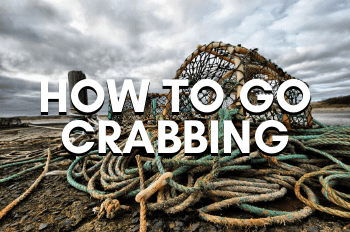
Keep in mind that this post coincides with my Crabbing Basics article. This one, however, is tailored for crabbing specifically in Delaware. Here, you’ll find specific tips and bits of information that just wouldn’t apply to everyone on a general guide on “How to go Crabbing.”

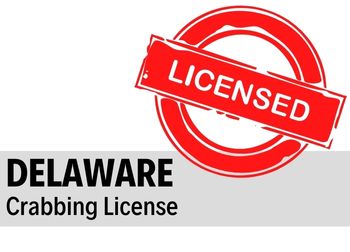


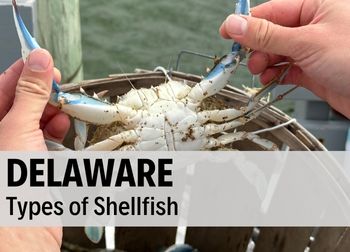
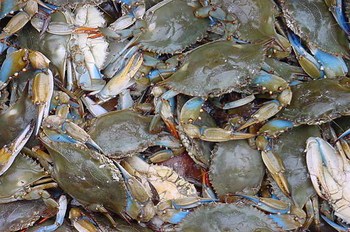
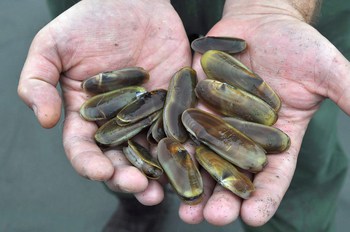
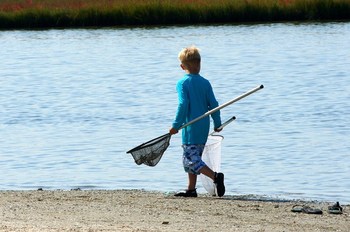

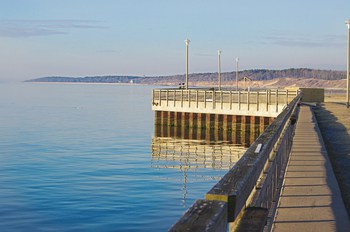
WOW! Thanks for creating this site! I am moving to Delaware permanently in a couple weeks, there is a wealth of information here!! 🙂
Thanks, Nick! I try my best. Welcome to Delaware!
Another bridge to crab from is on Blackbird Landing Road in Townsend.
That looks like a great spot! I’ll add it to the map. Thank you, Andrew!